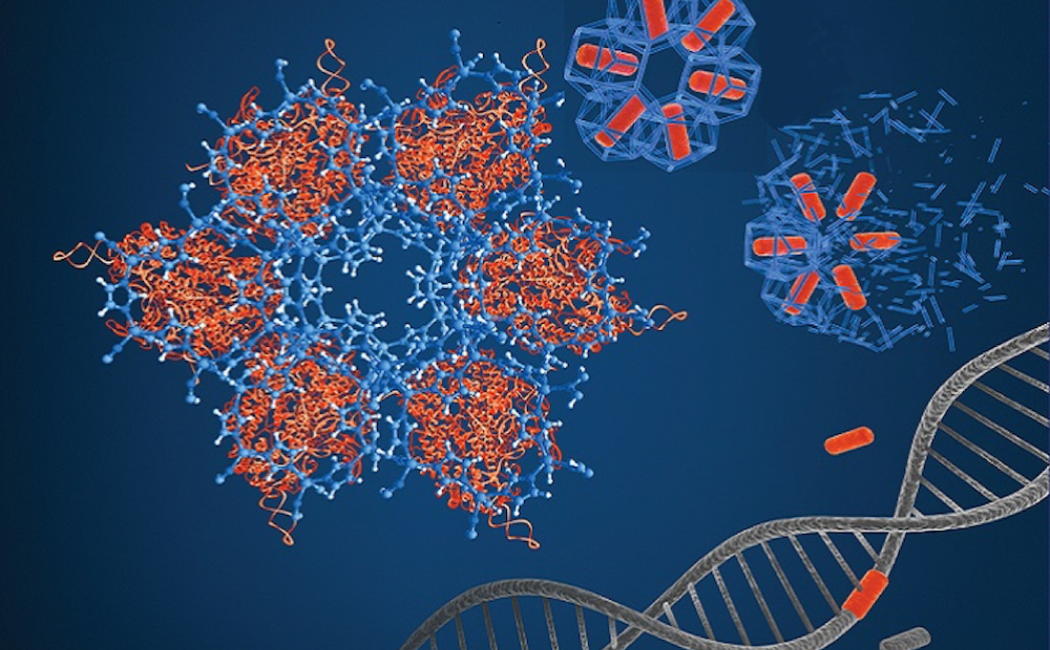2017 recipient of the L’Oréal-UNESCO for Women in Science Award Niveen Khashab builds nanoscale ‘miniature machines’ with diverse applications.
Niveen Khashab is a chemist with a passion for nanomaterials for building ‘miniature machines’ for biomedical, industrial and environmental applications. She designs biodegradable nanodelivery vehicles to carry drugs to specific organs, particle assemblies to deliver genetic material to silence cancer-causing genes, and nanoparticles to inject into wells to bring oil and gas to the surface.
Khashab was recently awarded the 2017 L’Oréal-UNESCO for Women in Science Award, together with four other researchers from around the world. “Receiving the award was my proudest moment to date, and it has given me a boost to continue designing realizable, useable products for the benefit of society,” says Khashab.
“This award has pushed me to work even harder to showcase the quality of cutting-edge research that is done at KAUST and the high caliber of our graduate students,” says Khashab. “Women are educators by nature, and I believe that KAUST is leading the way in quality education and career development for all its members.”
Khashab’s interest in nanotechnology was sparked by a 1959 lecture by American theoretical physicist Richard Feynman, who articulated a future world where tiny, miniature machines, built by manipulating individual atoms, were used in applications from biomedical sciences to electronics. He presented the concept of swallowing a tiny surgical robot, which he called “swallowing the doctor.” His talk also emphasized that “there’s plenty of room at the bottom” of the size scale, urging scientists to work from the molecular level up when considering new technology. It was this that inspired the young scientist from Lebanon to embark on a career designing and fabricating nanoscale smart materials.
A founding faculty member
Khashab joined KAUST as one of its founding faculty members in 2009. Born to a Lebanese father and a Saudi mother, she was the first in her family to get a university education, studying chemistry at the American University of Beirut. She continued graduate studies at several prestigious universities in the United States. She recalls when she first heard about KAUST from faculty member Brian Moran, who encouraged Khashab to return to the Middle East as a founding faculty member in 2009.
“I never dreamt the Middle East would have the potential to lead the field of organic and analytical chemistry until I heard about KAUST,” admits Khashab. “As an Arabic female who has faced the challenges of studying and working abroad, I want to help other female researchers achieve their goals by helping to establish a high-caliber research facility in the Middle East.”
Khashab now leads a
smart hybrid materials lab at KAUST. “I currently have 11 students in my lab, seven of whom are women, and I have to reject more than 10 applications a week due to lack of space in my group. So you can safely say that this area is hot!” The most exciting area currently, she enthuses, is smart sensing. “We create new platforms that sense a molecule of interest without using an invasive procedure. Knowledge is power. If we get enough information, we can really be effective,” says Khashab.
'Nature's art' becomes smart
Her team’s focus is on developing nanomaterials that are smart by nature—creating ‘miniature machines’ that react to specific stimuli at a molecular level. One example of their work is the tiny, self-assembling nanostructures that facilitate gene editing by delivering small interfering RNA (siRNA) to specific cells in the body1. The nanostructures, which assemble around the siRNA via electrostatic interaction, protect the siRNA en route through the body. Then, in response to green light, they disassemble and release their cargo into specific cells.
“Nature has mastered ‘the art of assembly’ and our goal is to harness this to our advantage for smart materials,” says Khashab. “Look at plants, insects and even our own bodies; the structure of our DNA, even individual cell walls, are formed by a combination of electrostatic interactions, hydrogen binding, and hydrophobic/ hydrophilic interactions, to name but a few.”
To demonstrate the power of selfassembly, Khashab’s team recently developed a novel method of building nanostructures from the atom-level up. They created tiny donut-shaped microstructures that self-assemble through metal co-ordination—the natural attraction and repulsion forces that exist between different charged atoms2. The resulting microstructures will improve understanding of how natural molecules, such as proteins, combine to form biomembranes, for example. The synthesized materials could create highly efficient, eco-friendly membranes for use in industrial catalysis and separation processes.
KAUST’s collaborative opportunities that lead to productive multidisciplinary studies are exciting for Khashab: especially as her research area is cooperative by nature. “I work with biologists, material scientists and electrical engineers on a daily basis,” she explains. It is these collaborations that enable Khashab to dream big to build tiny with nature.


